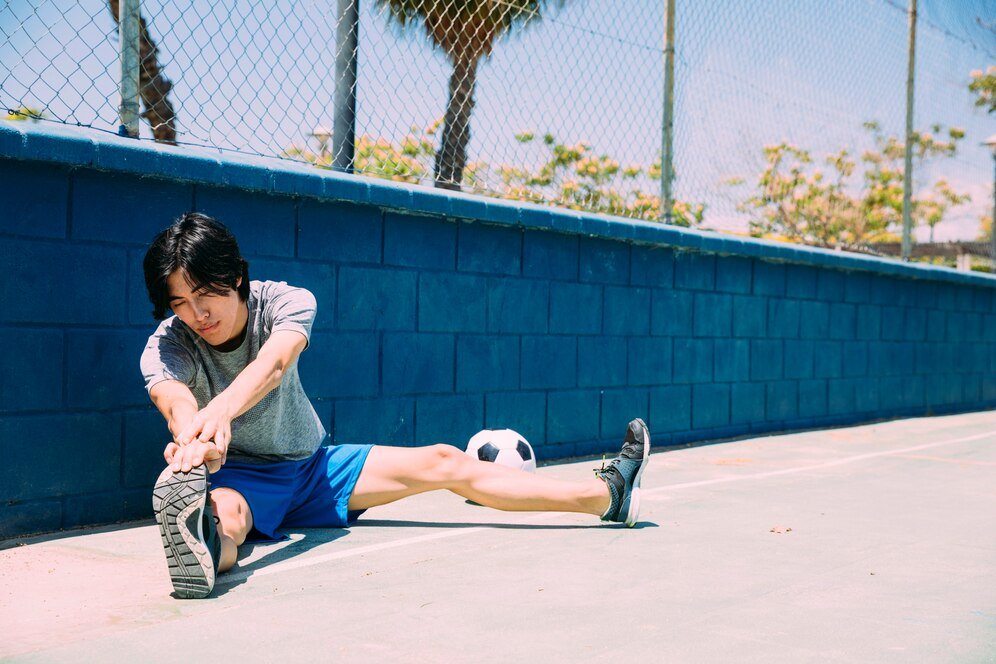
Strategies for Avoiding and Managing Typical Athletic Injuries
Share
Preventing Athletic Injuries
Proper Warm-Ups:
Warming up before engaging in any athletic activity is crucial. A good warm-up increases blood flow to the muscles, enhances flexibility, and prepares the body for the physical demands of exercise. Dynamic stretches, light jogging, and sport-specific drills are effective warm-up techniques.
Strength Training:
Incorporating strength training into an athlete's routine helps build muscle and improve joint stability. Stronger muscles support the joints better, reducing the risk of sprains, strains, and other injuries. Focus on balanced muscle development to prevent imbalances that can lead to injuries.
Flexibility Exercises:
Maintaining flexibility is key to preventing injuries, particularly those related to muscle strains and joint issues. Regular stretching exercises, yoga, and Pilates can enhance flexibility and reduce the risk of injuries.
Proper Technique:
Using correct techniques in sports and exercises is essential for injury prevention. Poor form can lead to unnecessary stress on the body, increasing the likelihood of injuries. Athletes should seek proper coaching and training to learn and maintain correct techniques.
Gradual Progression:
Avoiding sudden increases in intensity, duration, or frequency of workouts can prevent overuse injuries. Gradual progression allows the body to adapt to new stresses, minimizing the risk of injuries caused by overtraining.
Adequate Rest:
Rest is a crucial component of any training regimen. It allows the body to recover and repair itself, reducing the risk of overuse injuries. Athletes should ensure they get enough sleep and schedule rest days to avoid burnout and injuries.
Using Proper Gear:
Wearing appropriate athletic gear, including footwear, protective equipment, and clothing, can significantly reduce the risk of injuries. Proper gear provides support, reduces impact, and protects against potential hazards.
Managing Athletic Injuries
Immediate First Aid:
When an injury occurs, immediate first aid can prevent further damage and aid in recovery. The R.I.C.E. method (Rest, Ice, Compression, Elevation) is a common first aid treatment for many acute injuries, such as sprains and strains.
Rest and Recovery:
Rest is critical for the healing process. Avoiding activities that exacerbate the injury and giving the body time to heal can prevent further damage. Athletes should follow their doctor's advice on rest and gradually return to activities.
Rehabilitation Exercises:
After the initial healing phase, rehabilitation exercises are essential for restoring strength, flexibility, and function. Physical therapy can provide guided exercises and treatments to help athletes recover fully and prevent future injuries.
Professional Medical Treatment:
Seeking professional medical treatment for severe or persistent injuries is important. Doctors, physical therapists, and sports medicine specialists can provide accurate diagnoses, treatments, and rehabilitation plans tailored to the athlete's needs.
Pain Management:
Managing pain effectively can aid in recovery and prevent chronic issues. Techniques such as ice packs, heat therapy, over-the-counter pain relievers, and prescribed medications can help control pain during the recovery process.
Supportive Devices:
Using braces, splints, or other supportive devices can provide stability and protect the injured area during recovery. These devices can help prevent further injury and allow athletes to engage in light activities safely.
Mental Health Support:
Injuries can take a toll on an athlete's mental health. Support from coaches, teammates, and mental health professionals can help athletes cope with the emotional and psychological impact of injuries, aiding in overall recovery.
Conclusion:
Preventing and managing athletic injuries requires a comprehensive approach that includes proper preparation, strength training, rest, and immediate care when injuries occur. By adopting these strategies, athletes can minimize the risk of injuries and ensure a faster, more effective recovery when they do happen. Staying informed and proactive about injury prevention and management helps athletes maintain their performance and enjoy their sports safely.